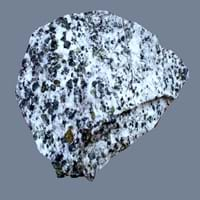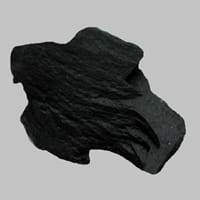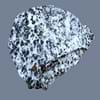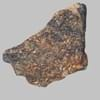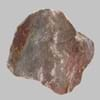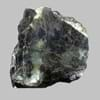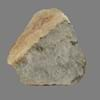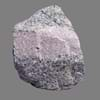Definition
Carbonatite is intrusive or extrusive igneous rock which is defined by mineralogic composition, consisting of greater than 50 percent carbonate minerals
Lignite is a soft brownish coal which shows traces of plants and is intermediate between bituminous coal and peat
Discoverer
Unknown
Unknown
Etymology
From any intrusive igneous rock, having a majority of carbonate minerals
From French, Latin lignum wood + -ite1
Class
Igneous Rocks
Sedimentary Rocks
Sub-Class
Durable Rock, Soft Rock
Durable Rock, Soft Rock
Group
Plutonic
Not Applicable
Other Categories
Coarse Grained Rock, Fine Grained Rock, Medium Grained Rock, Opaque Rock
Coarse Grained Rock, Fine Grained Rock, Medium Grained Rock, Opaque Rock
Texture
Granular, Poikiloblastic
Amorphous, Glassy
Color
Black, Brown, Colourless, Green, Grey, Pink, White
Black, Brown, Dark Brown, Grey, Light to Dark Grey
Durability
Durable
Durable
Appearance
Dull, Banded and Foilated
Veined or Pebbled
Interior Uses
Decorative Aggregates, Interior Decoration
Not Yet Used
Exterior Uses
As Facing Stone, Garden Decoration
Not Yet Used
Other Architectural Uses
Curbing
Not Yet Used
Construction Industry
As a Flux in the Production of Steel and Pig Iron, As a Sintering Agent in Steel Industry to process Iron Ore, As Dimension Stone, Cement Manufacture, for Road Aggregate, Making natural cement, Manufacture of Magnesium and Dolomite Refractories, Unknown, Unknown
for Road Aggregate, Steel Production
Medical Industry
Taken as a Supplement for Calcium or Magnesium
Not Yet Used
Antiquity Uses
Artifacts
Not Yet Used
Commercial Uses
An Oil and Gas Reservoir, As a Feed Additive for Livestock, Gemstone, Metallurgical Flux
Electricity Generation
Types
Not Available
Xyloid Lignite or Fossil Wood and Compact Lignite or Perfect Lignite
Features
Available in lots of colors, Generally rough to touch, Is one of the oldest rock
Generally rough to touch, Helps in production of Heat and Electricity, Used as fossil fuel
Archaeological Significance
Monuments
Not Yet Used
Not Yet Used
Famous Monuments
Not Applicable
Not Applicable
Sculpture
Not Yet Used
Not Yet Used
Famous Sculptures
Not Applicable
Not Applicable
Figurines
Not Yet Used
Not Yet Used
Formation
Carbonatites are intrusive or extrusive igneous rocks which are defined by mineralogic composition consisting of greater than 50 percent carbonate minerals and are formed due to low degrees of partial melting of rocks.
Coal formation takes place due to accumulation of plant debris in a swamp environment. The Coal formation process continues, as peat turns into lignite brown or black coal at increasing heat and pressure.
Mineral Content
Ancylite, Apatite, Barite, Fluorite, Magnetite, Natrolite, Sodalite
Not Available
Compound Content
CaO, Carbon Dioxide, Sodium Oxide
Carbon, Hydrogen, Nitrogen, Oxygen, Sulphur
Types of Metamorphism
Burial Metamorphism, Contact Metamorphism
Not Applicable
Types of Weathering
Biological Weathering, Chemical Weathering, Mechanical Weathering
Biological Weathering, Chemical Weathering, Mechanical Weathering
Types of Erosion
Chemical Erosion, Wind Erosion
Chemical Erosion, Water Erosion, Wind Erosion
Grain Size
Medium to Fine Coarse Grained
Medium to Fine Coarse Grained
Fracture
Conchoidal
Conchoidal
Porosity
Less Porous
Highly Porous
Luster
Subvitreous to Dull
Dull to Vitreous to Submetallic
Cleavage
Not Available
Non-Existent
Toughness
1
Not Available
Specific Gravity
2.86-2.87
1.1-1.4
Transparency
Opaque
Opaque
Density
2.84-2.86 g/cm3
800-801 g/cm3
Specific Heat Capacity
Not Available
Resistance
Heat Resistant, Pressure Resistant, Water Resistant
Heat Resistant
Deposits in Eastern Continents
Asia
China, India, Kazakhstan, Mongolia, Russia, Uzbekistan
Bangladesh, Burma, Cambodia, China, India, Indonesia, Kazakhstan, Malaysia, Mongolia, Pakistan, Turkey, Vietnam
Africa
Namibia, Nigeria, South Africa
Botswana, Kenya, Morocco, Mozambique, South Africa, Tanzania
Europe
Austria, Denmark, Germany, Great Britain, Netherlands, Norway, Poland, Sweden, Switzerland, United Kingdom
Belgium, Bulgaria, England, France, Germany, Greece, Hungary, Kosovo, Netherlands, Norway, Poland, Romania, Serbia, Slovakia, Slovenia, The Czech Republic, Ukraine, United Kingdom
Others
Greenland
Not Yet Found
Deposits in Western Continents
North America
Canada, USA
Canada, Mexico, USA
South America
Brazil
Brazil, Chile, Colombia, Venezuela
Deposits in Oceania Continent
Australia
New South Wales, New Zealand
New South Wales, Queensland, Victoria
All about Carbonatite and Lignite Properties
Know all about Carbonatite and Lignite properties here. All properties of rocks are important as they define the type of rock and its application. Carbonatite belongs to Igneous Rocks while Lignite belongs to Sedimentary Rocks.Texture of Carbonatite is Granular, Poikiloblastic whereas that of Lignite is Amorphous, Glassy. Carbonatite appears Dull, Banded and Foilated and Lignite appears Veined or Pebbled. The luster of Carbonatite is subvitreous to dull while that of Lignite is dull to vitreous to submetallic. Carbonatite is available in black, brown, colourless, green, grey, pink, white colors whereas Lignite is available in black, brown, dark brown, grey, light to dark grey colors. The commercial uses of Carbonatite are an oil and gas reservoir, as a feed additive for livestock, gemstone, metallurgical flux and that of Lignite are electricity generation.
